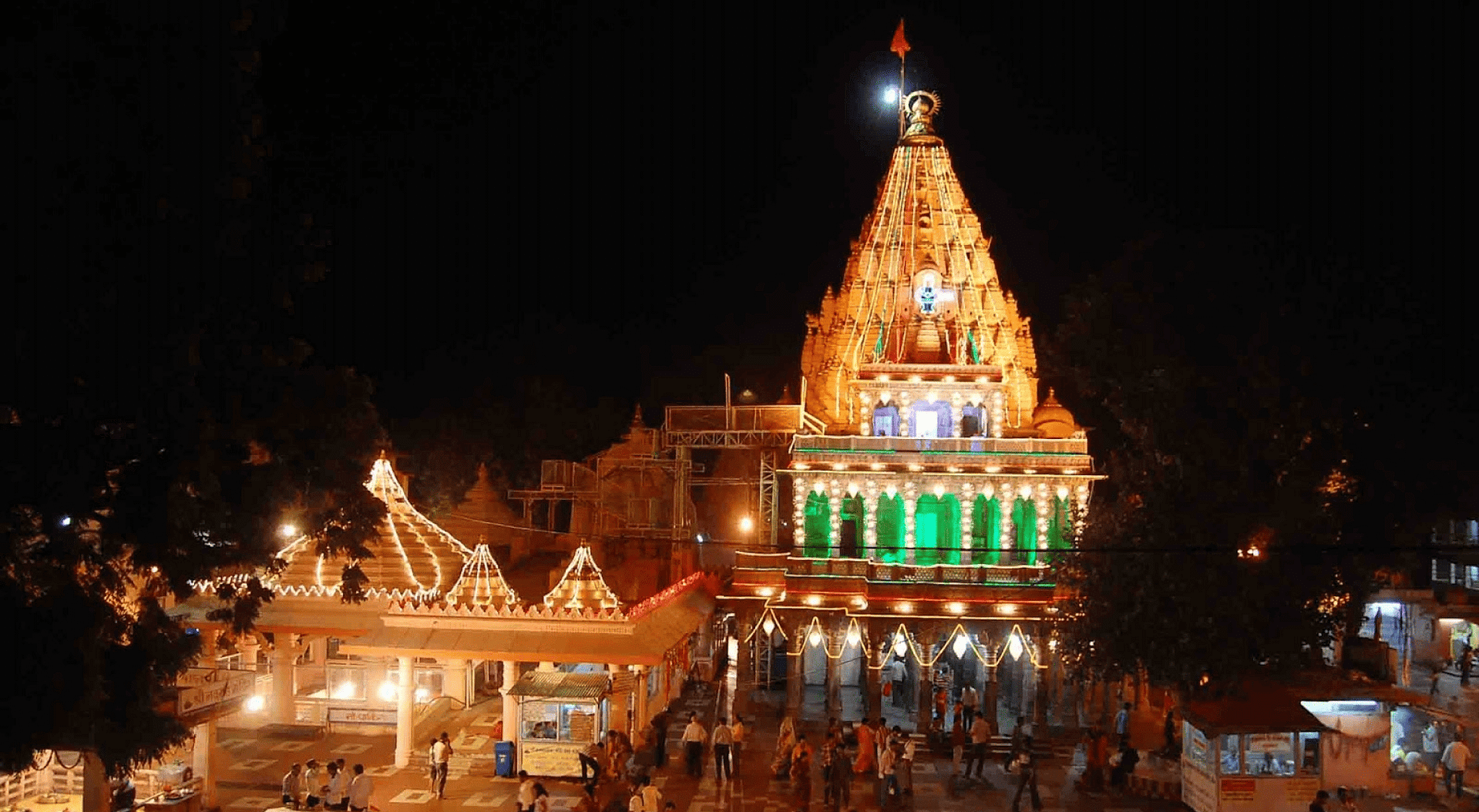Nestled along the sacred banks of the Kshipra River in the heart of India lies a place where time seems to stand still, the presence of God in Lord Shiva is believed to bless all visitors. This is the Mahakaleshwar temple in Ujjain and is often fondly referred to as “Ujjain Ke Mahakal”. With a history dating back to ancient times, this temple is a testament to India’s rich cultural and spiritual heritage.
Often referred to as the ‘Mahakaleshwar Temple Ujjain’, this temple holds a special place in the hearts of millions of Hindus around the world.
History of Ujjain Mahakal
To understand the significance of Mahakaleshwar Temple, we have to go back in time and explore the rich history of Ujjain Mahakal. The history of Mahakaleshwar Ujjain Temple is intertwined with the vibrant tapestry of Ujjain, one of the seven sacred cities in Hinduism.
The origins of this magnificent temple date back to ancient times, making it one of the oldest temples in India.. Legends suggest that Lord Shiva himself chose to reside in the form of “Mahakaleshwar Jyotirlinga” (lingam of light) in Ujjain to bless his devotees. The Lingam is known as “Swayambhu” meaning self-manifested, underscoring its divine nature.
An architectural marvel
Mahakaleshwar Temple is not only spiritually significant but also an architectural wonder. It boasts intricate architecture that showcases the exquisite craftsmanship of a bygone era. The temple complex is an amalgamation of several architectural styles with elements originating from the various dynasties that ruled Ujjain for centuries.
The towering tower adorned with ornate carvings dominates the Mahakaleshwar Ujjain Temple. The entrance to the temple, known as the Mahakal Darwaza, is a magnificent work of art that leads devotees into the sacred realm of Lord Shiva.
Meaning of Mahakaleshwar Temple Ujjain
Jyotirlinga Of Lord Shiva: The primary significance of Mahakaleshwar Temple Ujjain lies in the fact that it houses one of the twelve Jyotirlingas which are considered to be the most sacred representations of Lord Shiva. Pilgrims from all over India and the world flock to Ujjain to seek the blessings of Lord Mahakaleshwar.
Guardian of Time: Another feature of this temple is its connection with time. In the form of Mahakaleshwar, Lord Shiva is often considered as the “Guardian of Time” or “Kaala Bhairava”. It is believed that visiting this temple can help overcome the fear of death and the limitation of time.
Spiritual Ujjain: Ujjain itself has immense spiritual significance. It is one of the four places where the famous Kumbh Mela is held every 12 years, attracting millions of pilgrims and tourists. The spiritual aura of the city is further enhanced by the presence of “Mahakaleshwar Temple Ujjain”.
Worship And Rituals
The Mahakaleshwar Ujjain Temple is not just a place of architectural grandeur; it is a vibrant center of religious activity and ritual. The temple is open for devotees throughout the day, but the early morning ‘Bhasma Aarti’ is the most revered and impressive ritual.
Bhasma Aarti includes:
-Anointing the lingam with sacred ash.
– Singing hymns.
-Rhythmic sound of bells and conch shells.
Mythological legend
Mahakaleshwar Temple Ujjain is steeped in mythological stories that add to its charm. One such legend is associated with the demon king, Ravana. It is said that Ravana, an ardent devotee of Lord Shiva, attempted to transfer the sacred lingam to Lanka. In the process, Lord Shiva crushed the lingam to frustrate his efforts and leave behind fragments. These fragments are believed to have become the “Mahakaleshwar Jyotirlinga” and are enshrined in the temple.
Another mythology tells the story of a farmer named Shrikhar who inadvertently worshiped Lord Shiva in the form of a lingam while offering water to a cow. Pleased with his devotion, Lord Shiva appeared before him and blessed him. Shrikhar requested that the lord reside in the form of Jyotirlinga in Ujjain and bless the city and its people with his divine presence.
Conclusion
“Mahakaleshwar Temple Ujjain” is the symbol of eternity. Passionate and spiritual. Its rich history, magnificent architecture and mythological significance make it a must-visit destination for travelers and tourists alike. The temple is not only a reminder of the past, but also a strong place of faith today.




